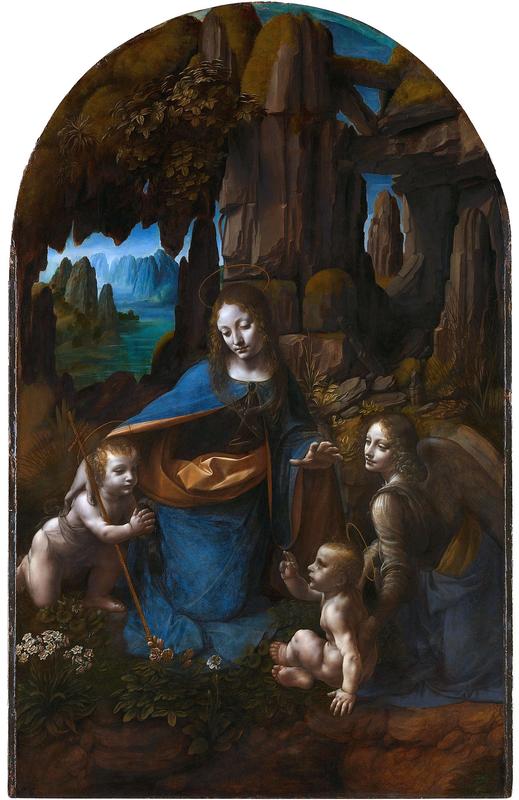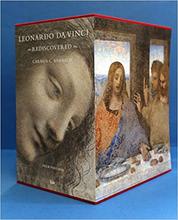More about The Virgin of the Rocks
- All
- Info
- Shop

Contributor
Although its title could double as the name for a fancy cocktail, this work is actually the first (and better) of two of the same painting by Leonardo da Vinci.
Started in 1483 and worked on for the next three years, this painting was commissioned by the Confraternity of the Immaculate Conception for an altarpiece in their new church in San Francesco Grande. No relation to the city with the Golden Gate, of course. Leonardo was promised a bonus on top of the original promised price for the completion of the altarpiece, but at this point Leonardo had tasted success and had become a bit of a diva. When he finished the painting he decided that the bonus wasn’t big enough so he sold the original work to the highest bidder and took his dear sweet time painting another not-so-impressive version of the same work for the Confraternity.
This first attempt at Virgin of the Rocks was a smidge too progressive for church, even for the Renaissance. Firstly, the work is free of any kind of symbolism to help figure out who’s who. This is literally the first work to ever get rid of halos entirely, so if you were to see this work anywhere other than a church you’d never think they were holy. The only way anyone knows that this is a holy family is because they are all way more beautiful and graceful than any normal person could dream to be. Secondly, unless somebody told you, you’d never know that the baby under Mary’s arm was supposed to be Saint John. Next, Mary’s on the ground. It’s not a very regal pose for the mother of God to be striking on an altarpiece. And lastly, the only sign indicating that the baby in the painting is baby Jesus is the blessing gesture that he is pointing at his cousin. What’s really progressive and scandalous about this work, though, is the angel.
Many assume that this is the angel Gabriel, the head-honcho of all angels. But, like the rest of the figures in the painting, the angel is hard to identify, especially since it is so androgynous.
See the National Gallery in London's version here.

















In the center of the painting, the Virgin Mary holds baby St. John with her right hand and baby Jesus with his left hand, forming a triangular composition.